Max Mosley’s 1961 Lotus Elite Type 14
Max Mosley’s Lotus Elite Driving the late motorsport maven’s first love. This Lotus Elite was bought new by the late one-time FIA president Max Mosley – and Octane played a small role in reuniting him with his first motoring love, six years ago. James Elliott tells all. Photography Dean Smith.
MAX MOSLEY’S LOTUS ELITE
An elite memento
It turns out that Octane is not only a rather splendid monthly magazine, but also a demon matchmaker that played a small yet pivotal cameo in reuniting this Lotus Elite with its original owner, the late Max Mosley, recently lost to cancer. That’s Max Mosley the lawyer turned racer turned F1 maven, team owner, FOCA rep and long-serving FIA president. And a car safety pioneer, let’s not forget.
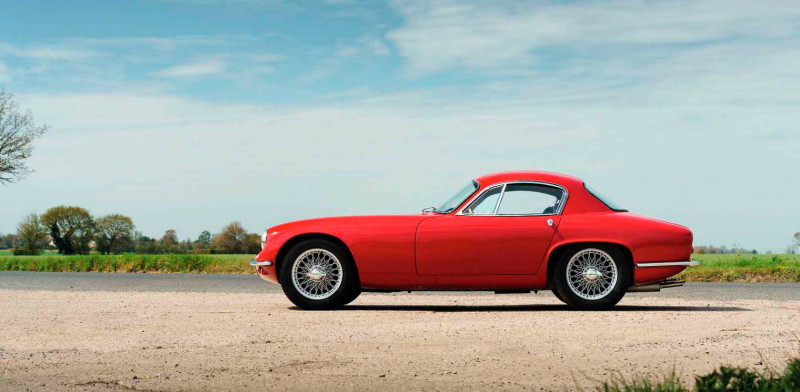
With no hint of his future career in F1, Mosley was a 21-year-old trainee barrister in Manchester when, entranced by the engineering and looks of the first full-sized glassfibre monocoque car, he bought into that state-of-the-art dreamin 1961. In what turned out to be the final interview he gave before his death on 23 May this year, he told Octane: ‘I found its advanced technology of the monocoque construction combined with a very advanced Coventry Climax engine so appealing, although it was way beyond my means financially. My only previous car had been a bug-eye Sprite, so it was quite a revelation.’
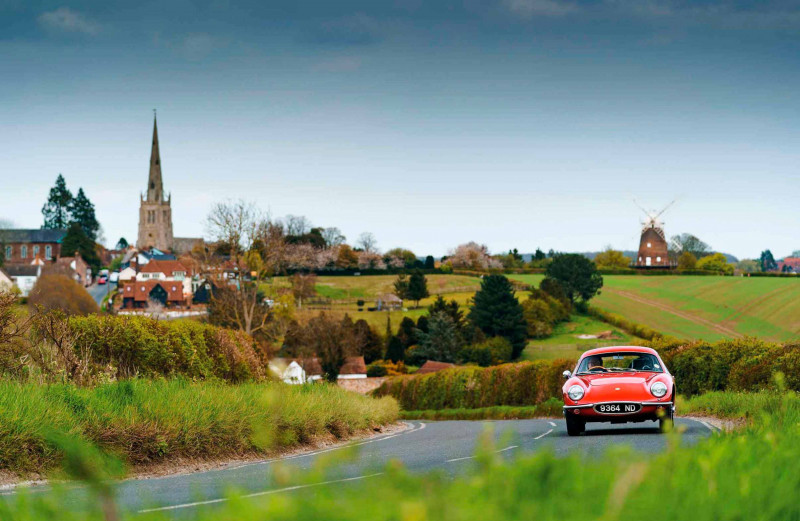
The young Mosley was an aspiring racer and sourced a lot of advice and help, not from Colin Chapman, whom he never met at that time, but Lotus’s Rodney Bloor, himself an accomplished wheelman. This included building the Elite from the kit of parts that Mosley had bought for a purchase tax dodging £1299 when a ‘built’ car was a hefty £1951.
‘Rodney was very helpful and gave good advice about my long-term ambition to go racing. Building the Elite from the kit would not have been possible without help from Rodney’s racing mechanic. I was present but not, as I recall, much use. I think it took two days.’
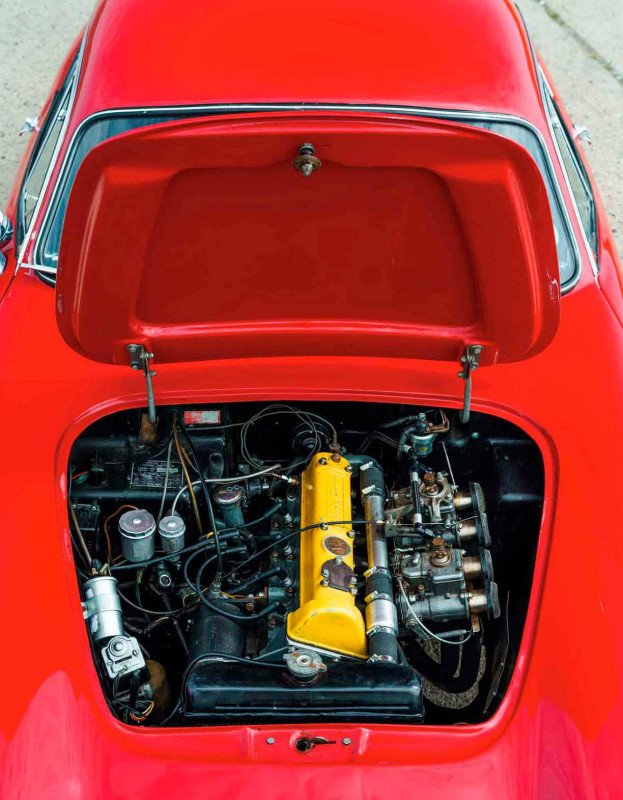
Mosley kept the Elite for three years and travelled all over Europe in it, including Monaco ’64 and plenty of other F1 destinations. Once he and wife Jean even slept in the Lotus when they couldn’t afford a hotel room at Reims in July 1962. As he told Octane, the problems he had were ‘many, but mainly minor’ and he reckoned the model’s reputation for fragility is ‘unfair given how novel it was’.
Eventually it had to be sold (for £600) when he needed an ‘ordinary’ car to tow his Clubman’s Mallock U2, but he always regarded it highly and remembered the Elite fondly, especially as the convergence of their careers brought him and Lotus’s genius Colin Chapman together. Mosley said of the Lotus boss: ‘He was uniquely talented in several motor sportrelated areas and great company. For example, with other F1 people we used to go each year to the Kitzbuhel ski races and get some skiing in at the same time. He was great fun, making up in enthusiasm what he lacked in skill. When he started coming to FOCA meetings he made a great difference. He lifted the level and was a big help.’
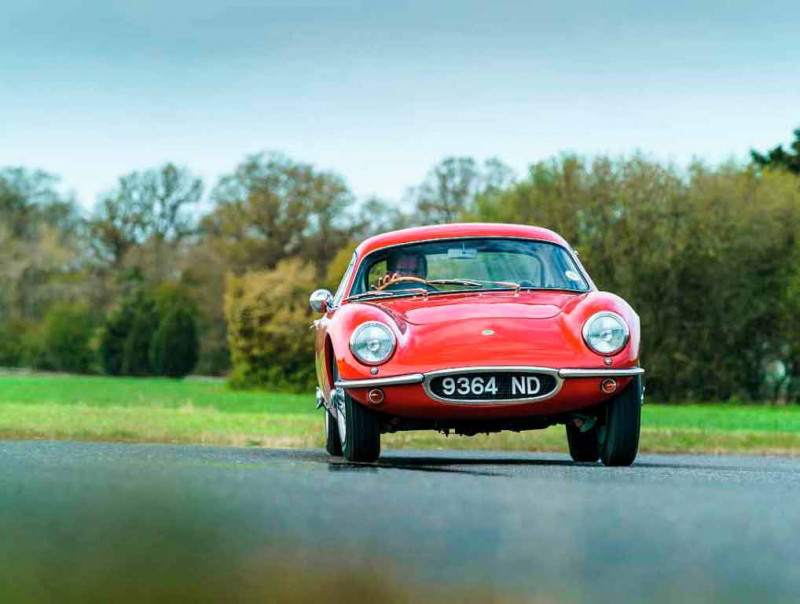
The Elite was a revolutionary car even for Chapman and Lotus, so much so that the following models with their backbone chassis were backward steps technologically. The Type 14 Elite was the company’s first proper road car and, like Enzo Ferrari before him, Chapman primarily made his foray into street cars to fund his racing activities. If you know your Lotus history, you will know that if the motor racing fraternity was less superstitious, the Elite would have been the Type 13. There was no such lack of braggadocio in the bold engineering of the new car. Of course, Chapman was far from the only engineer embracing the possibilities of glassfibre that were fuelling the motoring world’s entire men-in-sheds special industry, but few had enough faith in it to use it for a full monocoque. Think about it: your diff’ bolted straight to a 1950s plastic floor, the engine held in a triangulated cage bolted to the GRP.
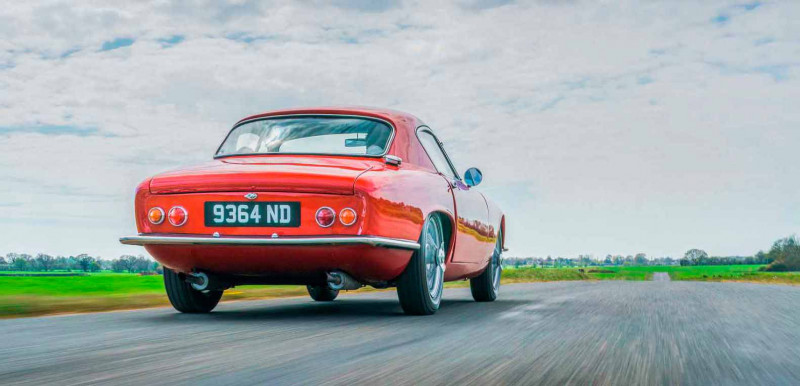
With the Elite designed in Crouch End but eventually built in the new Cheshunt factory, Lotus was actually beaten to the punch during the British dash for plastic by Berkeley’s SA322 Sports (a tiny sub-300kg British Anzani two-stroke powered car, styled by Lawrie Bond). When the Elite was revealed a year later in 1957, it shared a similar three moulding design strengthened by eight box sections that also provided either the mounting points or housings for the hardware. The Lotus was not quite 100% steel-free in its structure, but it was gorgeous. The bodies were built originally by boat company Maximar, then by Bristol, and the sensual shape is credited to accountant Peter Kirwan-Taylor, but there is known to have been extensive input from both Colin Chapman and aerodynamicist Frank Costin, the latter ensuring it was as slippery as an eel, with aerodynamic drag of 0.29Cd. ‘Mr Lola T70’ John Frayling, Ian Jones, Peter Cambridge and Ron Hickman all played their parts, too.
‘First impressions of any Elite can only be of how dainty and beautifully proportioned it is’
Weighing in at just 1484lb (673kg), the Elite did not need a massive engine to make it fly and motive power came from an enlarged Coventry Climax fire pump engine that combined elements of FWA and FWB to offer 75bhp from 1216cc. The all-alloy overhead cam FWE drove through a BMC/MGA gearbox (a ZF was a £98 option) and suspension was by double wishbones at the front and Chapman Struts and trailing arms at the rear. Braking was by discs all-round, inboard at the rear.
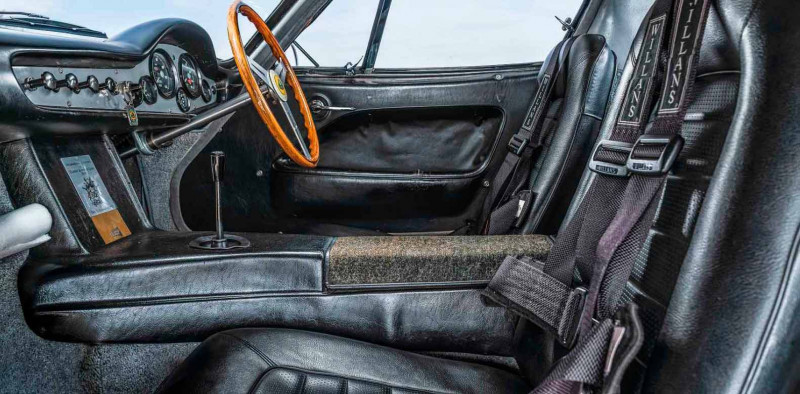
Despite its creation as a road car, it didn’t take the flyweight Elite long To make a major mark at the race circuits, notably with Chapman himself, who was still racing then, and his future protégé Jim Clark. A class win and eighth overall at Le Mans in 1959, followed by class dominance for the next three years, heaped more acclaim on it. There was an S2 model with suspension tweaks and also an SE (‘Special Equipment’) tuned version with a close-ratio ’box.
Just over 1000 Elites were sold between 1959 and 1963 and, like most of them, the Mosley Elite went into the usual lifecycle of multiple owners. After Mosley it was owned by JG Bryant in South Wales, then a Mr Graves-Morris, but at the end of 1969 the Elite was stripped and then the project stalled. It came to light again when Club Elite secretary Richard Wilson stumbled across it in 1997. From Wilson it went to club chairman John Mead, who restored it to Stage 2 spec and sold it on to France.
And then it cropped up at the Bonhams Goodwood Revival sale in 2015. The catalogue noted that chassis EB1649 was ‘first purchased from Lotus Cars by a Mr Mosley of Manchester on 23rd November 1961’ but failed to make the connection. Ardent Lotus fan Michael Hipperson did make that connection, however. Hipperson is a fascinating character himself. The Essex farmer’s son, who ran his own Braintree garage day-today and whose brother worked at Hexagon of Highgate, started investing in cars from1972 to themid-’80s, long before there was a mature market. That’s how Hipperson ended up running a £4600 GT40 as a daily driver before selling it to America for £17,500 four years later. Its stablemates in 1975 were a £2800 Daytona and a £4000 Miura.

He says: ‘I was born in Essex in 1947, I’ve never lived anywhere else and nor would I want to. In 1982 the garage was sold and I started a leasing company that I ran for 44 years until 2019 when I retired.’ The dyed-in-the-wool Lotus man bought his first Elan (a 1966 fixed-head) in 1968 following a Triumph Spitfire, then had an Escort Twin Cam, then a Gold Leaf Elan Sprint as a homebuild kit (he recalls all he had to do was put on one suspension leg and install the engine and gearbox). He later had a wedge Elite 501, an Elise in 2001, then another Elise (an S2 he kept for nine years), and then an Evora.
Early this millennium he started a charity event called the Elise Garden Party to raise money for Little Havens children’s hospice in Southend, plus other charities. By 2005 it had ballooned into an evening event with a guest speaker (Sir John Whitmore that first year) and an auction. Guests have since included Damon Hill, Jackie Oliver, Jody Scheckter, Christian Horner, Ross Brawn, Martin Whitmarsh, Mark Webber, Rosemary Smith and Louise Aitken-Walker. The events have so far raised over £350,000.
OK, this is where Octane comes in. Finally. Less than a week after that Bonhams auction, Octane hosted an evening with Max Mosley at the Royal Automobile Club in London, an event that Hipperson attended, and after which he took the opportunity to raise the matter of the Elite with Mosley. The latter was invigorated to hear that his old car was still around, confirmed that it had been his, and determined to buy it back. A fairytale ending? Not quite, the very slight problem being that the car had just sold for £57,500 at the auction, and not to Hipperson. So he contacted Bonhams, who revealed that the Elite had been bought by a US-based Scot and was in storage in Hampshire awaiting shipping. A little horsetrading later, and Mosley had his Elite back and Hipperson was appointed its guardian.
Since then it has been reunited with its original registration, resprayed in original red (it was dark blue with a silver roof), while the engine was rebuilt and enlarged to 1500cc by doyen Tony Mantle (though the original block has been retained).
First impressions of any Elite can only be of how dainty and beautifully proportioned it is. From the door catches and quarter-bumpers to instruments and switches, everything is minimalist and slender.
That truncated tail (for aero) may have been a talking point in the 1950s, but not now. Inside it is surprisingly roomy and, even were I not a Borrower, there would be ample headroom. The seats are cossetting and comfy and the modern three-point harnesses may not look the part but they strap you to them effectively. Seeing the weave of the fibre on the inside of the naked roof is not the Elite’s best aesthetic feature and neither are the prominent strut turrets standing proud behind the driver, but other than that it cannot be faulted.
‘Mosley and wife Jean slept in the Lotus when they couldn’t afford a hotel room at Reims in July 1962’
Fire it up and that stoic Coventry Climax engine chunters pleasantly, with a background of increased induction noise offered by a pair of side draught Weber 40s rather than the standard SUs. The most telling detail of this car for me is the tiny wand of a gearlever, barely bulkier than a Bic Biro, as if Lotus was reinforcing the message that, like its cars themselves, things don’t have to be big and brawny to be quick and devastatingly effective. In this car, that lever – which you operate with thumb and forefinger while pinkie stands erect as if you were drinking out of delicate porcelain – stirs four ZF gears that are gorgeous in their spacing and operation. Slip it into first, take off and, after a bit of axle tramp, there are plenty of unfamiliar noises such as the diff ’ clonking on the underside. Before you can truly relax into an Elite, it takes a few minutes of recalibrating what you expect a car to be like and sound like.
Steering is marginally heavier than expected and not quite as direct as in an Elan, but it doesn’t seem to lighten much so is perfect at speed and soon you are shuffling along at a decent lick. Oddly, on the move it doesn’t feel like sub-700kg of glassfibre monocoque; it seems relatively sturdy and more like a GT than an out-and-out sports car. If that is the case, it handles sublimely for a GT and glides through corners with effortless poise. A cliché? Perhaps, but if any car has earned such an accolade it is this one. Thanks to the Weber oomph and then speedy but not searing progress, it is like a sprinter bursting from the blocks and settling into their smooth stride.
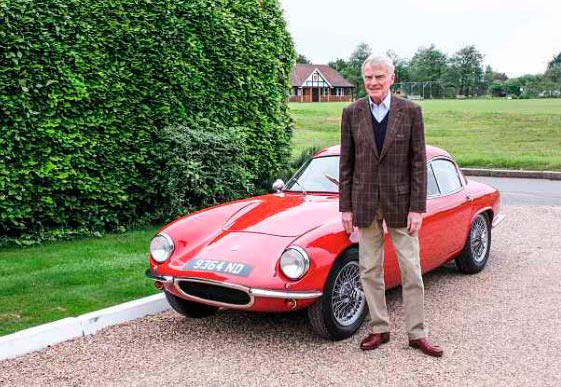
As you pick up pace, it actually feels as if the Elite hydraulically lifts itself a couple of inches and raises its centre of gravity accordingly. Then, properly up to speed, with fingertip steering guidance, it just skates dreamily through corners and you can feel the thinness of the 155 SR 15 tyres through the steering wheel in the way that it drives, which is pretty amazing. The quicker you go, the more stable the Elite feels. In truth it could well be handling on a knife-edge, but it is so easy and light to control, the balance so perfect, that it never feels like it as you carry incredible speed through corners.
The reality check here, of course, is that perhaps the greatest weapon in the Elite’s armoury is that it has all the pace to engage and enthral a driver, but not quite enough to breach its own limits and scare you.
Hipperson agrees: ‘In 1978,my dad had one and I really liked the car and I don’t think there has been a better-looking one. I am very lucky in that Max has allowed me to be custodian of it and to drive it. It’s 110bhp and 650kg so it’s a real driver’s car, but it’s not that quick. Yes, it’s fussy and noisy and people moan about the resonance inside, but it’s unlike anything else to drive. The fettling and upkeep is continual, almost daily by Mark Sanford, a local Lotus-owning garage owner.’
But the final word should go to Mosley, who was so thrilled to be Reunited with the car because ‘it played such a big role in my early married life’… and because he rated it the most beautiful ever. Had he used it much since getting it back? ‘Not as much as I should like. It’s not really suitable for modern London traffic so it lives in the country with Michael.’ How tragic that he never actually got to drive it again, but I can vouch that this evacuee is very much at home on quiet Essex backroads.
YOU CAN SEE this car at the new Auto Royale Concours, which takes place at Waddesdon Manor on 16-18 July. See autoroyale.com.
Hipperson has written a book about his experiences – ‘Chasing Elites’ – that you can order at letthemstare.co.uk/shop and from which all proceeds go to charity. For more on the Elise Garden Party or to contribute a prize to the raffle, email michael@michaelhipperson.co.uk.
Below Reunited, the late Max Mosley and the Lotus Elite of which he had so many fond memories from his ownership in the early 1960s. Left Minimalist interior isn’t the most refined environment, but shaping the instrument panel to match the Elite bodyshape was a work of genius. Left and right Coventry Climax engine is revvy, and 75bhp (as standard, or 110bhp as here) is plenty in a sub-700kg car; poised and delicate handling is its great strength. Above and below All-glassfibre monocoque has always been an Elite claim to fame, but so was its elegant styling.
1961 Lotus Elite Type 14 (this car)
- Engine 1500cc OHC four-cylinder, two Weber carburettors
- Power 110bhp @ 6100rpm
- Torque 70lb ft @ 3300rpm
- Transmission Four-speed manual, rear-wheel drive
- Steering Rack and pinion
- Suspension
- Front: double wishbones, coil springs, telescopic dampers.
- Rear: trailing arms, struts, coil springs
- Brakes All Discs
- Weight 673kg
- Top speed 115mph
- 0-60mph 8.5sec


